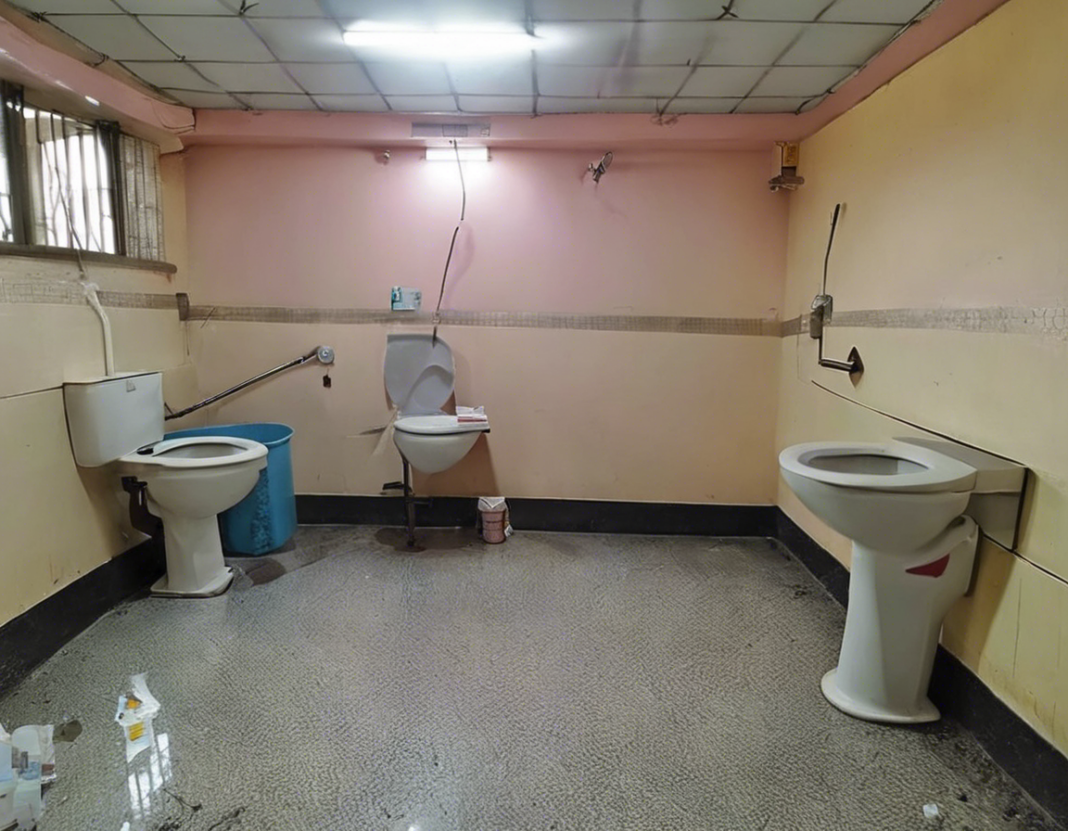In the bustling city of Nanded, India, healthcare facilities play a crucial role in ensuring the well-being of its residents. One such institution, the Nanded Hospital, has garnered attention for its exemplary efforts in maintaining clean and hygienic toilets under the leadership of its dedicated Dean. The importance of clean toilets in healthcare settings cannot be overstated, as they directly impact patient health, staff morale, and overall cleanliness standards. In this article, we will delve into the various initiatives undertaken by the Dean of Nanded Hospital to ensure that the hospital’s toilets meet high standards of cleanliness and hygiene.
Importance of Clean Toilets in Healthcare Facilities
Clean toilets are a fundamental requirement in healthcare facilities for several reasons:
Infection Control
Clean toilets play a critical role in infection control, as bacteria and viruses can easily spread in unhygienic conditions. Maintaining cleanliness in toilets helps prevent the transmission of diseases among patients, staff, and visitors.
Patient Comfort and Dignity
Clean toilets are essential for ensuring patient comfort and preserving their dignity. Patients should have access to sanitary facilities that promote healing and well-being.
Staff Morale and Productivity
Clean toilets contribute to staff morale and productivity by providing a comfortable and hygienic environment for healthcare workers to carry out their duties effectively.
The Dean’s Initiatives for Clean Toilets at Nanded Hospital
Under the leadership of the Dean, Nanded Hospital has implemented several initiatives to maintain clean toilets:
Regular Cleaning Schedules
The Dean has established regular cleaning schedules for all toilets in the hospital, ensuring that they are cleaned multiple times a day with appropriate disinfectants.
Staff Training and Awareness
Training sessions are conducted for cleaning staff to educate them on best practices for toilet hygiene. Staff are trained to use the right cleaning products and techniques to ensure effective sanitation.
Monitoring and Feedback Mechanisms
The Dean has put in place monitoring mechanisms to track the cleanliness of toilets. Feedback from patients, visitors, and staff is also collected to identify areas for improvement.
Maintenance and Repairs
Prompt maintenance and repairs are carried out to address any issues with toilet facilities, such as leaking taps or broken fixtures. This proactive approach helps maintain cleanliness standards.
Use of Eco-Friendly Products
The hospital has transitioned to eco-friendly cleaning products to minimize the environmental impact of its sanitation practices. These products are equally effective in ensuring cleanliness and hygiene.
Best Practices for Maintaining Clean Toilets in Healthcare Facilities
Apart from the specific initiatives undertaken at Nanded Hospital, there are several best practices that healthcare facilities can adopt to maintain clean toilets:
- Regular Inspections: Conduct regular inspections of toilet facilities to identify and address cleanliness issues promptly.
- Adequate Ventilation: Ensure proper ventilation in toilets to prevent unpleasant odors and maintain air quality.
- Provision of Hand Hygiene Facilities: Provide handwashing stations with soap and water or hand sanitizers in all toilet areas.
- Proper Waste Disposal: Implement effective waste disposal systems to keep toilets clean and hygienic.
- Education and Training: Educate both staff and users on the importance of toilet hygiene and best practices for cleanliness.
FAQs on Clean Toilet Maintenance in Healthcare Settings
1. Why is toilet cleanliness important in healthcare facilities?
Clean toilets are crucial in healthcare facilities to prevent infections, maintain patient comfort, and uphold hygiene standards.
2. How often should toilets in healthcare facilities be cleaned?
Toilets in healthcare facilities should ideally be cleaned multiple times a day to ensure continuous sanitation.
3. What are some common challenges in maintaining clean toilets in hospitals?
Common challenges include high foot traffic leading to frequent use, potential contamination from infectious waste, and ensuring compliance with cleanliness protocols.
4. How can staff contribute to maintaining clean toilets?
Staff can contribute by following proper cleaning protocols, promptly reporting maintenance issues, and promoting hygiene among patients and visitors.
5. What role do patients play in toilet cleanliness?
Patients can help maintain cleanliness by following hygiene practices, reporting any issues they encounter, and disposing of waste properly.
In conclusion, maintaining clean toilets in healthcare facilities is a shared responsibility that requires collaboration between hospital management, staff, patients, and visitors. The efforts of the Dean at Nanded Hospital serve as a testament to the positive impact of prioritizing toilet hygiene in healthcare settings. By adopting best practices and emphasizing the importance of cleanliness, healthcare facilities can create a safe and hygienic environment for all stakeholders involved.

